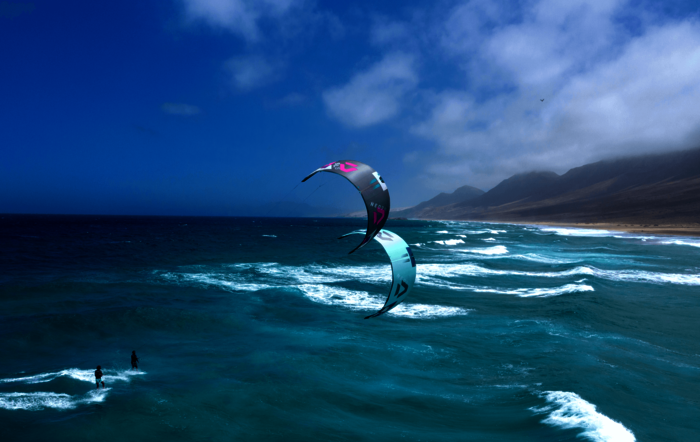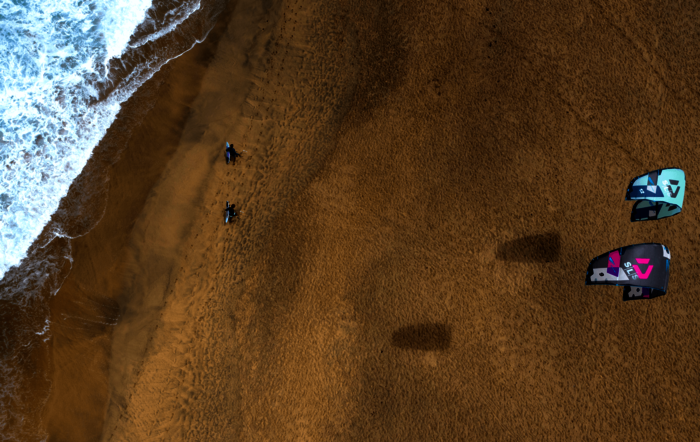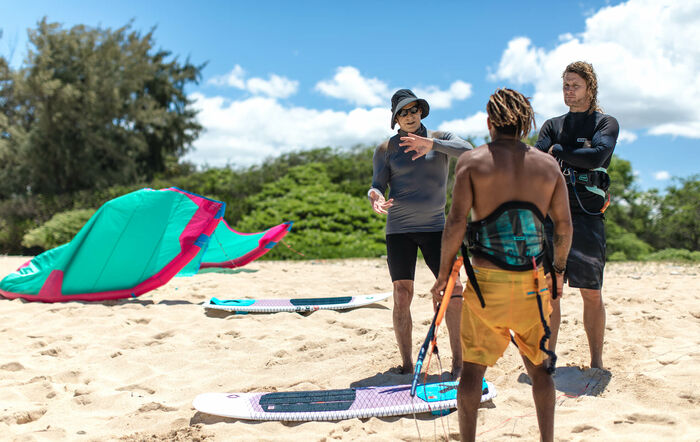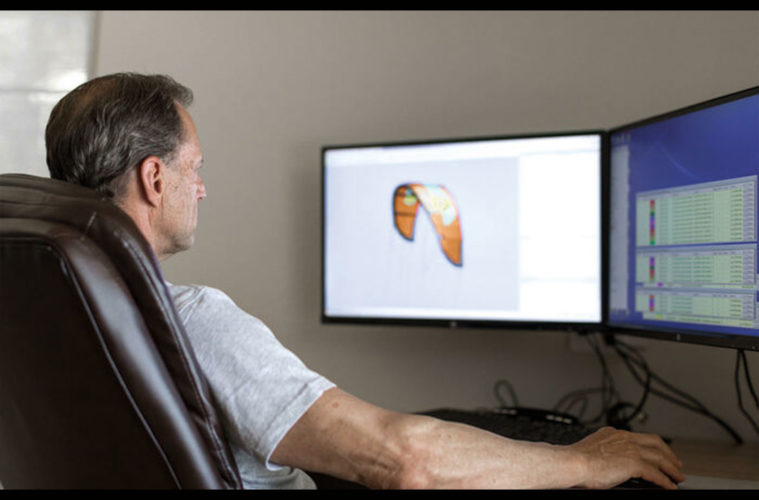The Neo, Neo SLS and Ken Winner are a great example of Duotone’s brand’s history, philosophy and commitment to kiteboarding. Every past achievement they have made in kite design have all come together in this moment, 2021. Ken Winner continues to reinvent and innovate the wheel alongside Ralf Grosel. Ken will never say, but the Neo is one of his greatest successes and we see it whenever he returns to the drawing board for something old, or new. We wish we could have been a fly on the wall, watching Duotone’s two kite designers coming together as they achieved this industry milestone.
Speaking with Ken about the Neo SLS, his first response was; ”˜Well if Airton loves it”¦ I’m happy.’
A few months on, the guys at Duotone caught up with Ken to get the inside scoop behind the Neo SLS.
 WHAT WAS YOUR VISION FOR 2021 NEO SLS?
WHAT WAS YOUR VISION FOR 2021 NEO SLS?
Our goal was to use materials that we knew to be Superior, Lightweight and Stronger. The 2021 Neo SLS model takes on our new, Penta TX material complemented by the STW70 heavy-duty Rip Stop material.
Penta TX is an extremely stiff, light, robust material, perfect for the Leading Edge and other high-stress kite elements. It’s woven from thicker threads, has less stretch and it 5 x more tear resistant than previous materials. The final touch to its composition is an entirely new coating matrix for superior durability and resistance to bias stretch.
Once we had the materials, the next step was to evolve the geometry of the kite and capitalise on the strengths of these materials. This design process was the polar opposite to what we have become used to over the years and our early efforts with Penta TX, showed us that we would have to make some major changes to our well versed approach of the past, enhancing the shortcomings of the materials. Now, we had to harness the potential of the new Penta TX.
The physical and mechanical properties of Penta TX were wildly different to our previous cloth. In addition, early Penta TX prototype kites had a very lively feel that proved too lively and harsh, especially in the smaller sizes. So our vision was to cultivate the liveliness and tame the harshness, through design and structure, not material.
With the overall goal being to make a stronger, lighter, superior model of the NEO, the Penta TX provided significant weight reduction and a huge range for in-flight performance. Structural stiffness is what harnesses these attributes so we focused our use of STW70 on the Tip Struts. It’s light weight but can be tuned to deliver precise stiffness. But, as with all great innovations the real question is, can it last? We had to asses its durability. We built kites with STW70 Tip Struts and sent them to kite schools in places with demanding climates like Brazil. Interestingly, after months of hard use the kites came back to us in far better condition than we expected. STW70 was looking like a miracle material, requiring less reinforcement and therefore contributing even less to the weight of the kite.
 WHAT’S THE PROCESS OF BRINGING IT ALL TOGETHER?
WHAT’S THE PROCESS OF BRINGING IT ALL TOGETHER?
More understanding of the materials was a big part of the process. We did durability testing and built protos in different sizes using patterns from existing production Neos, also available in 2021 alongside the SLS. This parallel process allowed us to study the differences in look, feel and performance.
We had to implement different Strut construction; on one hand because the Penta TX is stiffer and on the other because the STW70 is lighter.
As we gained a better understanding of the material and how it would affect the performance of Neos, both big and small, we started dialling in the geometry changes that would give us better performance.
 HOW DID YOU ACHIEVE THIS AND HOW DOES IT TRANSLATE INTO PERFORMANCE?
HOW DID YOU ACHIEVE THIS AND HOW DOES IT TRANSLATE INTO PERFORMANCE?
Big kites tend to be less lively, less crisp, less quick, so we wanted looked to maximize the liveliness of the Penta TX. On the contrary, small kites tend to be very lively. Although the general consensus was to capitalise on the exciting performance and weightlessness that Penta TX gave us, we were on guard to prevent an end product that was hectic and harsh.
Possibly the most obvious change in geometry of the Neo SLS is in the Tips, which are more square than in the past. In reality the difference is small, but to the eye it appears to be big. Making the Tip more square was not the big step. Making it more square without changing the bridle anchor points was.
We tried various positioning and found that if we lowered it too much the kite was unpredictable, lacking consistent structure and less reliable than a NEO. The opposite yielded minimal affect. Combining this change in geometry with the Flex Strut of STW70 in the tips gave our larger NEOS a really lively feel and super quick turning.
When we made the same changes to smaller NEOS, we got the quick turning but the feel was a bit harsh. In order to mellow this out, we adjusted the geometry. We narrowed the chord in the centre, widened the chord in the tips and narrowed the overall arc of the kites very slightly. We knew these changes would mellow the feel of the mid-size Neos, a case of small adjustments create balance. We exaggerated the changes to chord dimensions a bit on the small sizes and ended up with some very lively, quick-turning kites. The result was intentional and complemented by the comfort SLS delivers.
WHO WILL ENJOY THE 2021 NEO SLS?
The shape, feel and purpose of the Neo is obvious and the Neo SLS clearly defines the reason, potential and support for this achievement. It’s for the driven, the daring and the determined riders on a quest for the ultimate ride. Why strive to be Airton, when you can be Airton.
This article first appeared on the Duotone blog here.


